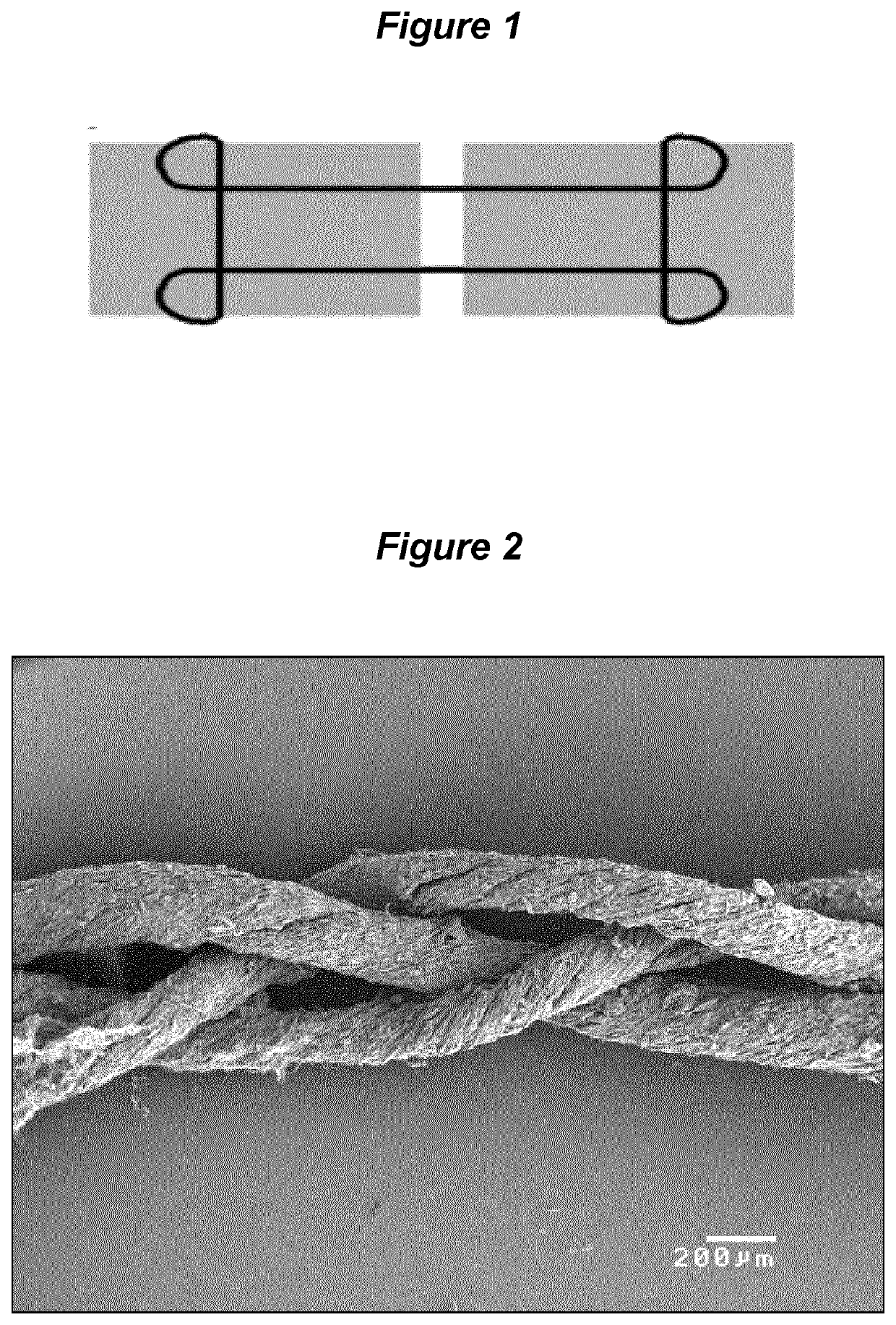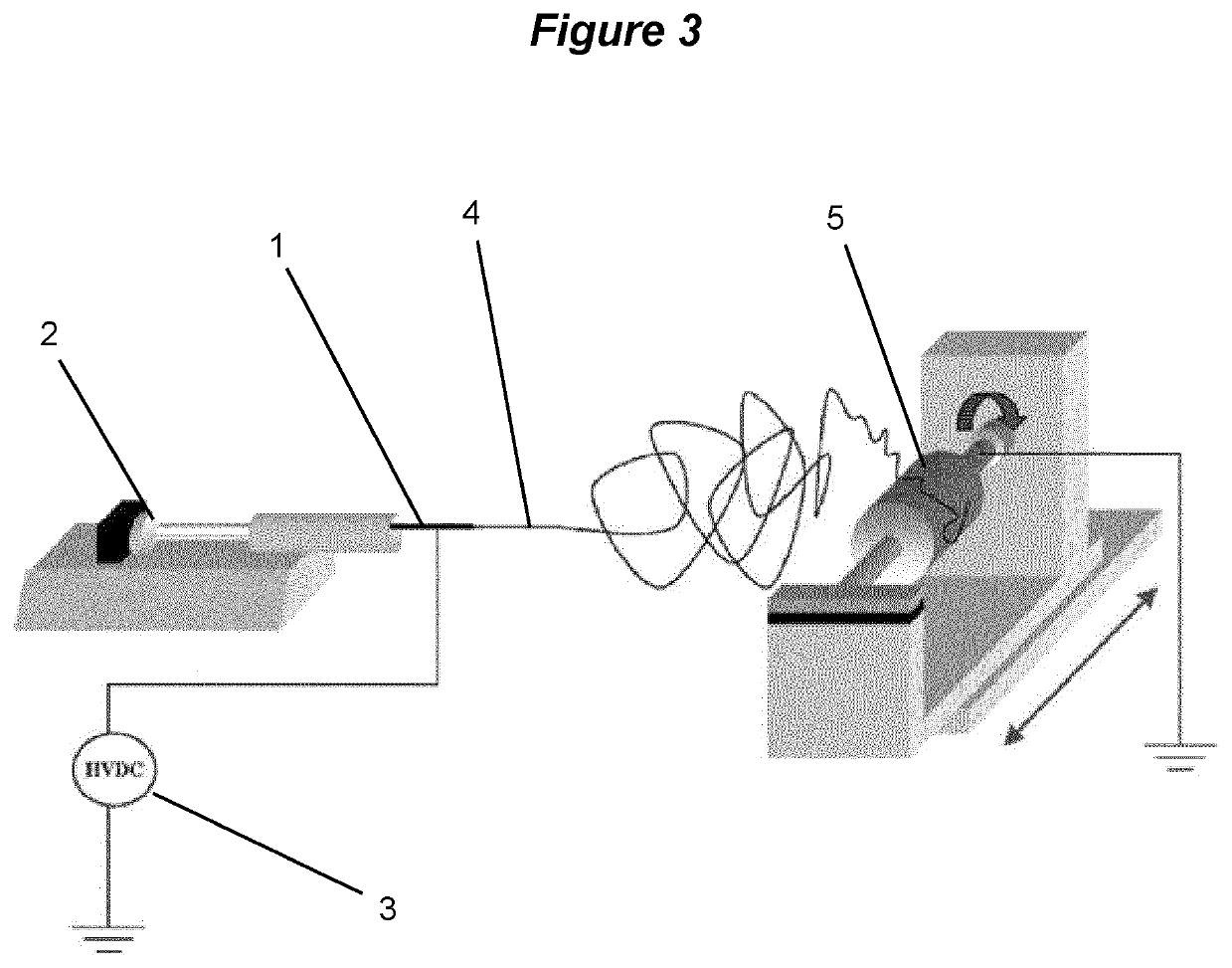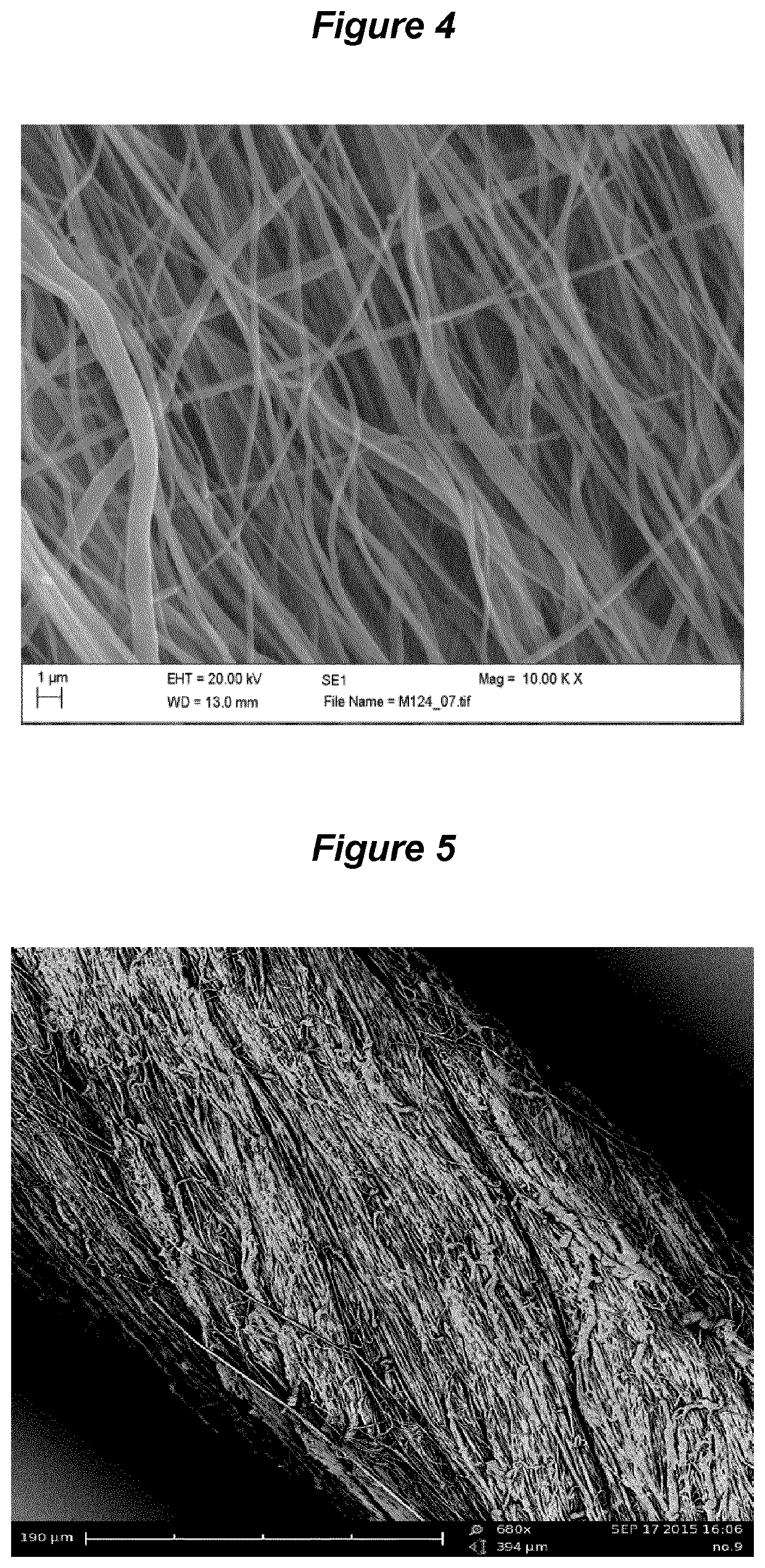Tissue repair scaffold and device
a tissue repair and tissue technology, applied in the field of tissue repair scaffolds and tissue repair devices, can solve the problems of not being able to perform rupture testing, tissue damage, and particularly damage to tendons, and achieve the effects of preventing a tendon from bulking out, facilitating cell growth, and maximising the aperture area
- Summary
- Abstract
- Description
- Claims
- Application Information
AI Technical Summary
Benefits of technology
Problems solved by technology
Method used
Image
Examples
Embodiment Construction
[0109]Aspects and embodiments of the present invention will now be discussed with reference to the accompanying figures. Further aspects and embodiments will be apparent to those skilled in the art. All documents mentioned in this text are incorporated herein by reference.
[0110]Examples of tissue repair scaffolds are described herein, comprising a three-dimensional knitted body made of yarn formed by twisting a plurality of aligned electrospun PCL fibres. These fibrous constructs are intended to mimic both the morphological anatomy and the biomechanical properties of natural human tendon. This tissue is known to be composed of a hierarchical organisation of aligned collagen fibres. In embodiments, whilst the fibres contained within the PCL yarn are not of the same size as the collagen fibres, the dimensions and morphology of the yarn closely resembles those within the natural tendon tissue.
[0111]The scaffolds described herein are biodegradable and / or bioresorbable. This suitably eli...
PUM
| Property | Measurement | Unit |
|---|---|---|
| diameter | aaaaa | aaaaa |
| diameter | aaaaa | aaaaa |
| diameter | aaaaa | aaaaa |
Abstract
Description
Claims
Application Information
 Login to View More
Login to View More - R&D
- Intellectual Property
- Life Sciences
- Materials
- Tech Scout
- Unparalleled Data Quality
- Higher Quality Content
- 60% Fewer Hallucinations
Browse by: Latest US Patents, China's latest patents, Technical Efficacy Thesaurus, Application Domain, Technology Topic, Popular Technical Reports.
© 2025 PatSnap. All rights reserved.Legal|Privacy policy|Modern Slavery Act Transparency Statement|Sitemap|About US| Contact US: help@patsnap.com



